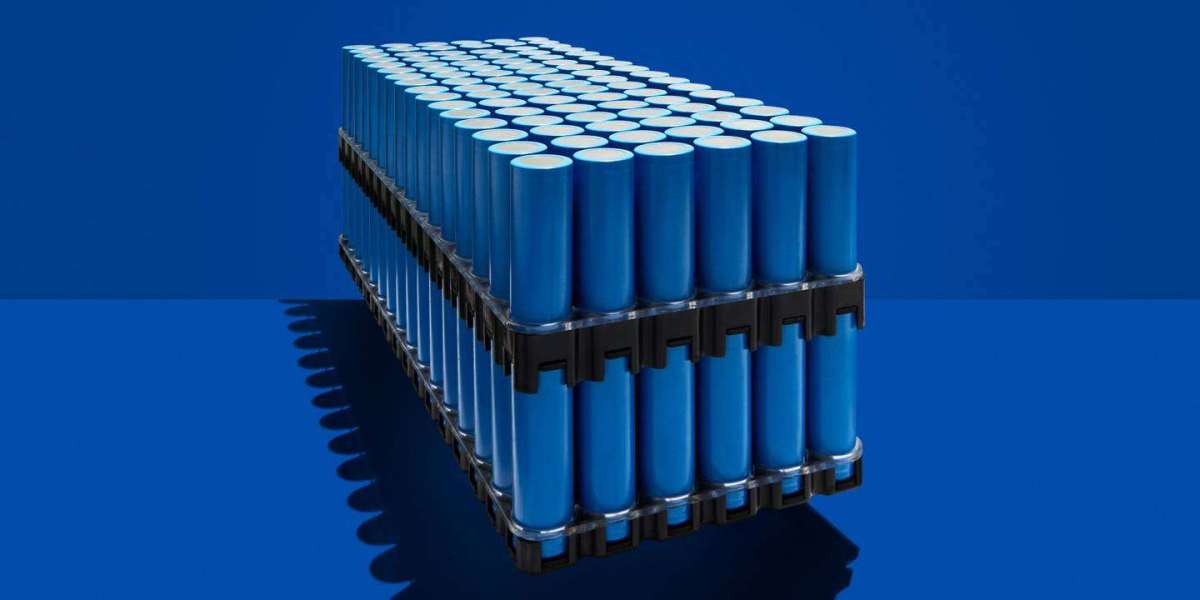The Li-ion battery industry has seen rapid growth in recent years, driven by the increasing demand for electric vehicles (EVs), renewable energy storage, and portable electronics. A key component that influences the performance and longevity of these batteries is the electrode coating, which plays a critical role in energy storage, ion movement, and overall battery efficiency. As the demand for high-performance and long-lasting batteries intensifies, thermal and mechanical stress on the coating materials used in these batteries presents a significant challenge.
The coatings on both the anode and cathode of a Li-ion battery must withstand various operational stresses, including temperature fluctuations and mechanical strain that occur during the charge and discharge cycles. If not properly addressed, these stresses can lead to performance degradation, reduced cycle life, and potential safety hazards, such as thermal runaway. As such, mitigating these stresses is essential for advancing the Li-ion battery electrode coating market and ensuring batteries meet the increasing performance requirements for next-generation applications.
Understanding Thermal and Mechanical Stress in Li-Ion Battery Coatings
Thermal stress in Li-ion battery coatings is primarily caused by the changes in temperature during battery operation. When a battery charges or discharges, the temperature inside the cell fluctuates due to the movement of lithium ions between the anode and cathode. This fluctuation can cause the electrode materials and their coatings to expand or contract, leading to the development of stress within the material.
At higher temperatures, the electrolyte and active materials in the electrodes may degrade, which accelerates capacity fading and reduces the battery’s overall lifetime. In extreme cases, thermal stress can lead to issues such as delamination of the coating from the electrode or formation of dendrites, which can cause short circuits, reducing battery safety.
On the other hand, mechanical stress arises from the volume expansion and contraction of electrode materials during the insertion and extraction of lithium ions in the charge and discharge process. In particular, materials like silicon are highly prone to volume changes, as they expand significantly when lithium ions are inserted, leading to cracking or degradation of the electrode coating. This mechanical stress can weaken the integrity of the coating, contributing to loss of capacity, structural damage, and shortened cycle life.
Both thermal and mechanical stresses can also compromise the overall safety of Li-ion batteries, leading to a higher risk of failure or explosion if not adequately managed.
The Challenge of Mitigating Thermal and Mechanical Stress
To improve the performance, reliability, and safety of Li-ion batteries, it is crucial to find solutions that effectively address both thermal and mechanical stress in electrode coatings. Several challenges must be overcome to mitigate these stresses:
Material Selection and Compatibility: One of the biggest challenges in addressing thermal and mechanical stress is selecting the right materials for electrode coatings. The coating materials must be highly conductive, durable, and able to withstand temperature fluctuations and mechanical deformation. At the same time, they must also be compatible with the electrode material and minimize degradation during repeated charge and discharge cycles.
Strain Management: Managing the mechanical strain caused by the expansion and contraction of electrode materials is a significant challenge. While some coatings can effectively cushion or absorb these deformations, others may crack or lose adhesion, leading to battery failure. The development of nano-scale coatings and composite materials can help improve strain resistance and enhance the structural integrity of the electrode.
Thermal Management: Effective thermal management is essential to prevent the buildup of excessive heat in Li-ion batteries, which can exacerbate thermal stress. While some electrode coatings help dissipate heat, others may need to be engineered for better thermal conductivity to regulate temperature more effectively. Coatings that can not only withstand high temperatures but also enhance heat dissipation are essential for improving battery efficiency and longevity.
Long-Term Reliability: The long-term durability of coatings under conditions of thermal and mechanical stress is another significant challenge. Over time, repeated temperature cycling and mechanical stress can lead to degradation of the coating’s properties, reducing its effectiveness. Therefore, it is critical to develop coatings that can maintain their performance over thousands of charge-discharge cycles.
Innovative Solutions to Mitigate Thermal and Mechanical Stress
To address these challenges, researchers and manufacturers are exploring innovative approaches to improve Li-ion battery electrode coatings. Several promising developments are underway in material science, coating techniques, and battery design to mitigate the effects of thermal and mechanical stress.
1. Nanostructured Coatings
One of the most effective strategies for mitigating mechanical stress is the development of nanostructured coatings. By using nanomaterials like graphene, carbon nanotubes, or silicon nanowires, researchers can create coatings that are more flexible, durable, and resistant to cracking during volume changes. These coatings enhance the mechanical properties of the electrodes, enabling them to better withstand the strain caused by lithium-ion intercalation.
Additionally, nanostructured coatings can improve electrical conductivity, energy density, and heat dissipation, contributing to overall battery performance and safety.
2. Composite Coatings
The development of composite coatings, which combine multiple materials, is another promising solution. For example, silicon-carbon composite coatings combine the high capacity of silicon with the flexibility and stability of carbon. These coatings help mitigate the volume expansion of silicon and prevent cracking during the charge-discharge cycle. Moreover, composite coatings can be tailored to improve thermal conductivity and ion transport within the battery, improving both efficiency and cycle life.
3. Solid-State Electrolytes
Another approach to addressing thermal stress is the use of solid-state electrolytes in place of traditional liquid electrolytes. Solid-state electrolytes provide better thermal stability, as they are less likely to evaporate or degrade at high temperatures. By incorporating solid-state coatings with ceramic or polymer-based materials, manufacturers can improve thermal conductivity and safety, while also reducing the risk of dendrite formation or thermal runaway.
4. Advanced Thermal Management Solutions
To address thermal stress, many manufacturers are focusing on advanced thermal management solutions that incorporate phase change materials (PCMs) or heat sinks into the battery design. These materials can absorb excess heat and help regulate the temperature of the battery, preventing overheating and reducing thermal stress on the coating and electrodes. Additionally, the use of heat-dissipating coatings or conductive polymers can help manage the heat generated during charging and discharging cycles.
Conclusion
Mitigating thermal and mechanical stress in Li-ion battery electrode coatings is essential for enhancing the performance, reliability, and safety of modern batteries. As the demand for high-performance batteries increases, innovations in nanostructured coatings, composite materials, and thermal management solutions will play a critical role in addressing these challenges. By overcoming the limitations of traditional coatings, researchers and manufacturers are paving the way for next-generation batteries that offer improved efficiency, longer cycle life, and greater safety for applications in electric vehicles, renewable energy storage, and consumer electronics.
The continuous evolution of coating technologies will ensure that Li-ion batteries can meet the increasing demands of the modern energy storage landscape, powering the future of electric mobility, clean energy, and beyond.








